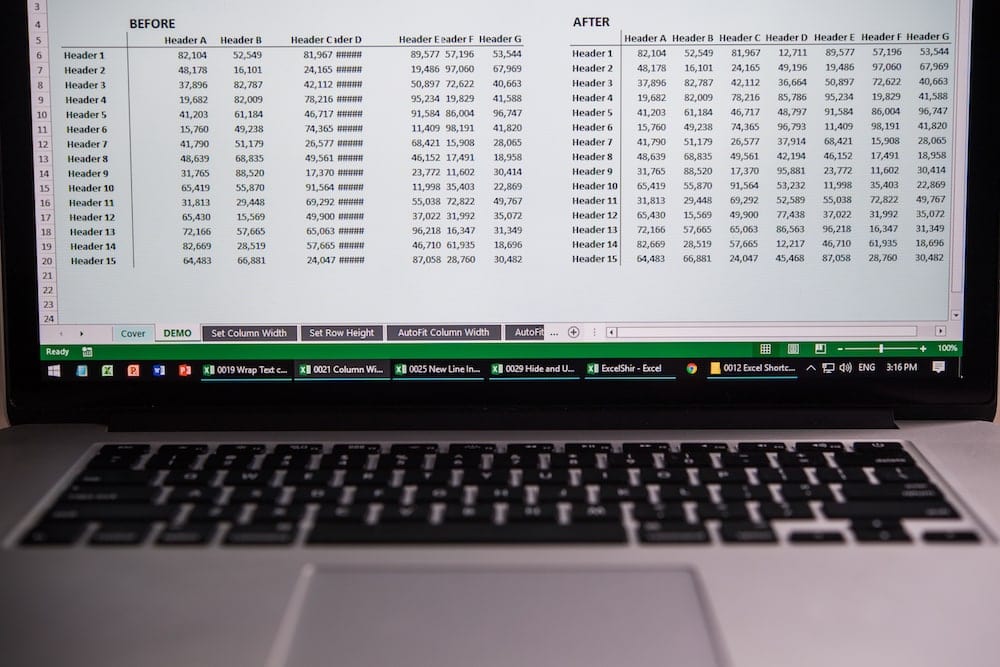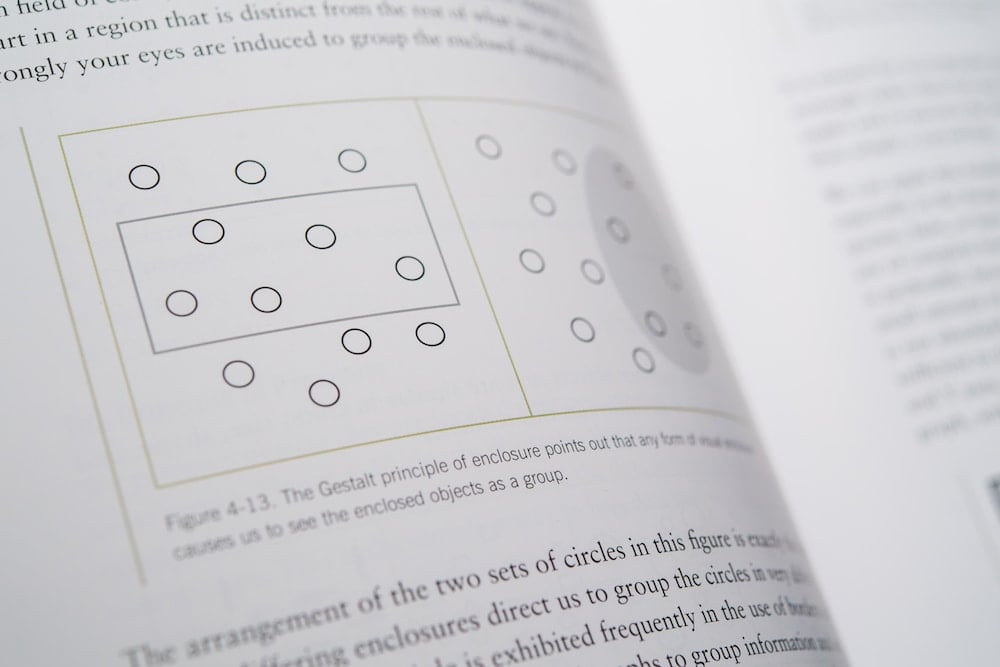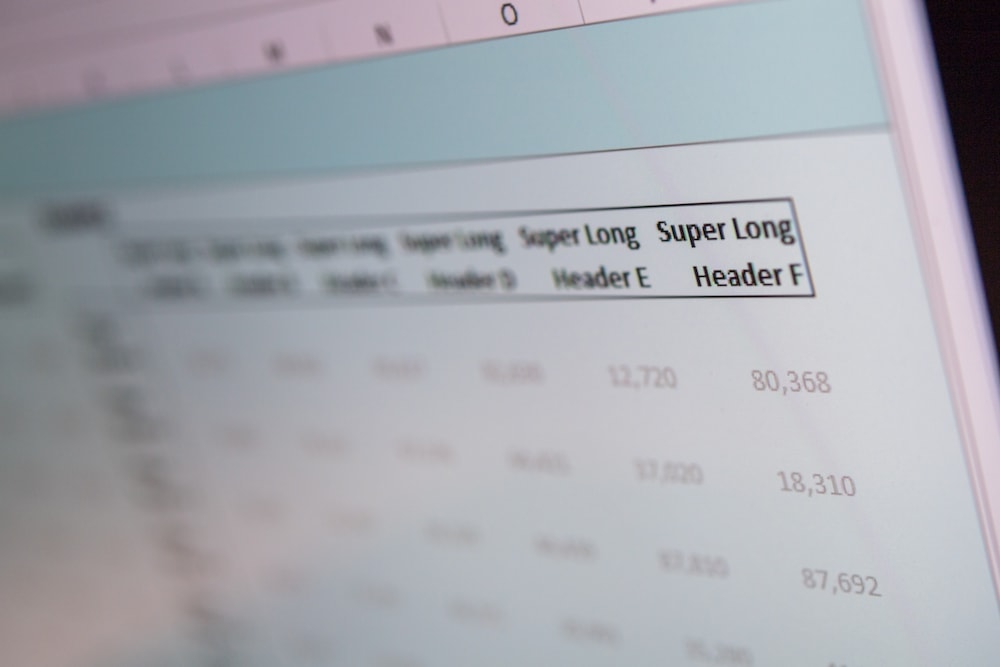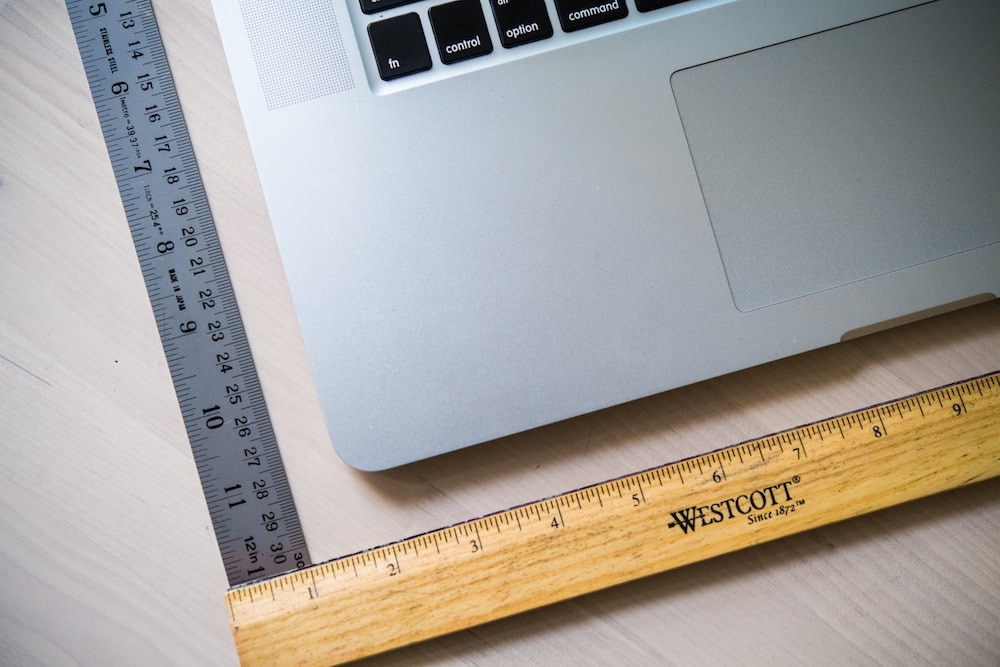You know those annoying # signs that pop up on your spreadsheet every once in a while? It’s because your columns aren’t wide enough!
In today’s video, I’m going to teach you how to change the column width and row height with laser-like precision and speed.
Download FREE Hands-On Exercises
Full Video Transcript:
If you’re still using the mouse to adjust the column widths manually, I guarantee you that you’re leaving minutes on the table every single day.
Minutes that you could be spending getting coffee, gossiping with coworkers, or watching videos of corny Excel instructors.
No matter what industry you’re in or what your job is, or pretty much what you’re doing with your life, you will always need to change column widths and row heights. It’s just a fact of life. It’s just how it is.
There’s two main approaches. You can do the quick and dirty approach, and the precise guess and check. Quick and dirty refers to AutoFit, and the guess and check refers to changing the exact column width or row height. So, let me show you both.
If you’re on a PC, you want to go ahead and use the ALT + H + O + W to set the column width. Now, notice something about all of these is that they’re based on the current selection. So, for example, if I take all of this here and I want to expand it to fit all of them, I’m not just going to go ahead and click this way because that takes me forever.
Instead, I’m going to select all of these and do ALT + H + O, right? H for Home, O for Format, and I want to do a W for Width. If I wanted to guess exactly how much, because I’ve been doing this a long time, I’m going to guess probably, like, 14, and it’s pretty close, right?
But if I want it to be exact, I would do ALT + H + O + I to AutoFit, which is a really big time saver, and it’s based on the selection, meaning if I do ALT + H + O + I here, it’s going to fit only to this level. If I want to do the entire column, ALT + H + O + I.
If I, you know, hit ALT first, it’ll work, and it’ll give us to all of that because I have a lot of text underneath, so be aware of what you’re selecting before you actually put that shortcut into effect.
If you want to do the row, in contrast, it’s going to be ALT + H + O + H for the Row Height. Usually the default is 15. Or you can actually go ahead and do ALT + H + O + A to AutoFit the row height.
So, how do we remember all this? There’s a couple really corny Santa Claus tricks here, so just bear with me.
W is for width, which is super easy. H is for height, but for the I and the A, just think of the I as, like, suck it in, Santa, and the fact that I is, like, the most narrow vertical line anyway, so it will, you know, suck it in, basically.
A is, like, think of an attic, and you got to watch your head in the attic because they have low ceilings. You want to fit that row so it’s nice and snug, and it’s really compact. So, again, you always start with the H + O. That’s why I thought of Santa Claus. HO HO HO HO, get it? Okay.
And then there’s the Mac equivalent, which is all based on the customized shortcuts. So, go ahead and go to the description of this video and click on the link to go step-by-step on how to create your own Mac keyboard shortcuts. otherwise these will not work at all. So, again, I chose similar keys so that it’s actually very much related to the same as the PC.
Wishing you had your own exercises to follow along with? Well, fortunately, they’re right here. Just go ahead and actually follow through with each of these to the point where the left side looks exactly like the right. And you’ll notice that the numbers themselves are different on the PC than on the Mac, but again, just use the ones that correspond to the system that you’re using.
So, If I have a PC here, I’m going to keep the default at 8.43, but this one I’m going to do ALT + H + O + W and get the 9 here and hit ENTER, and it’s going to adjust it for me that way.
So, I’m going to go through each one. You can select a single cell or the entire column if you’re doing the Adjust Width with ALT + H + O + W because it’ll affect the whole column anyway. So, that’s for the Set Column Width.
Similar thing with the row height, and then you’re going to do AutoFit. So, be aware of what you’re selecting first. That’s the trick to this whole thing to make it look exactly like this. You’ll get a feel for it and see how it works, but, basically, that’s it, and then when you’re done, you want to actually go ahead and make sure that everything wraps up nicely.
The trick to this whole thing is that when you’re using Wrap Text, things can get a little bit weird because it doesn’t know how you want to, basically, AutoFit them. So, what I mean by that is…I’m going to do a little AutoFit of the row. So, ALT + H + O + A is how I get this point, but I don’t know. If I do ALT + H + O + I it’s going to cut it off here, but if I’m over here, for example, and I do ALT + H + O + I, it’s different.
It doesn’t always know what to do, so this is more of the art of Excel than the science. So, kind of get it most of the way there first, but then get more precise by doing ALT + H + O + W and maybe doing it to a four. And then you can snug it in so it’s already cut off at the right word, that kind of thing. So, again, just play with it and get the feel for it, but basically, have fun and learn.
Don’t forget to visit excelshir.com where you can download these exercises, along with other free resources such as keyboard shortcut cheat sheets for both PC and Mac.
Thanks for watching, see you next time, and one last exercise. Think of the person you love the most. Call them up and share the Excel love. Sharing is caring.





